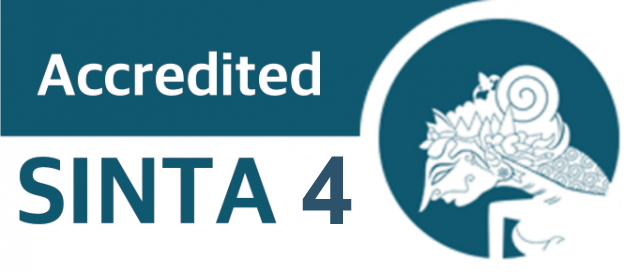Development of Interactive Edugame Learning Media Based on Quartet Cards on Material on Changes in the State of Matter
DOI:
10.29303/jpm.v20i1.8445Published:
2025-01-30Issue:
Vol. 20 No. 1 (2025)Keywords:
Changes in the State Of Matter; Interactive Edugame; Kuartet Card; Learning Media; Learning OutcomesArticles
Downloads
How to Cite
Downloads
Metrics
Abstract
Teachers have not been optimal in varying interactive and concrete Edugame-based technology learning media. This study aims to describe the development design and test the feasibility and effectiveness of Quartet Card-based Interactive Edugame learning media for grade IV students of SDN Pesantren, Semarang City. This type of research is Research and Development (RnD) with the Borg and Gall model. The subjects of the study were 30 grade IV students of SDN Pesantren. Data collection techniques used tests (pretest and posttest) and non-tests (observation, interviews, questionnaires and document data). Data analysis techniques used normality tests, t-tests, and N-Gain tests. The results of the study showed: (1) Quartet Card-based Interactive Edugame Learning Media was developed using the Canva application with Kuartet Card box components, instructions for using Kuartet Cards containing the competencies achieved, main cards inserted with barcodes and modified cards in the form of boom cards containing questions as rewards and punishments; (2) The results of the feasibility of the material experts were 92.5%, media experts were 90%, teacher responses were 100% and student responses were 100% in the very feasible category; (3) The effectiveness of the Quartet Card-based Interactive Edugame learning media was shown by an increase in pretest and posttest results of 36.79%, supported by the results of the paired sample t-test with a sig. value. (2-tailed) <0.001<0.05, which means there is a significant difference, and the results of the N-Gain test were 0.778 in the high category. The conclusion of this study shows that the Quartet Card-based Interactive Edugame learning media was successfully developed, feasible, and effective in improving the learning outcomes of class IV students of SDN Pesantren Semarang City on the material of changes in the state of matter.
References
Y. Vari, “Pemanfaatan Augmented Reality Untuk Melatih Keterampilan Berpikir Abad 21 Di Pembelajaran IPA,” Jurnal Pendidikan IPA, vol. 11, no. 2, pp. 70–75, 2022, doi: 10.20961/inkuiri.v11i2.55984.
S. Hamdi and C. Triatna, “Kurikulum Merdeka Dalam Perspektif Pedagogik,” SAP (Susunan Artikel Pendidikan, vol. 7, no. 1, 2022.
K. Indra Sukma, T. Handayani, and U. Muhammadiyah Hamka, “Pengaruh Penggunaan Media Interaktif Berbasis Wordwall Quiz Terhadap Hasil Belajar Ipa Di Sekolah Dasar,” Jurnal Cakrawala Pendas, vol. 8, no. 4, 2022, doi: 10.31949/jcp.v8i2.2767.
D. Tila Elisa dkk, A. Karakteristik Pembelajaran IPA di Sekolah Dasar, D. Tila Elisa, M. Bumbun, and P. Dheni Purnasari, “Analisis Karakteristik Hakikat Pembelajaran IPA di Sekolah Dasar,” JPPD: Jurnal Pedagogik Pendidikan Dasar, 2023, [Online]. Available: https://ejournal.upi.edu/index.php/ppd/index
V. Z. Putri et al., “Analisis Pemahaman Konsep Perubahan Wujud Zat Melalui Pratikum Pembuatan Es Krim Putar,” Jurnal Belaindika :Pembelajaran dan Inovasi Pendidikan, vol. 6, no. 2, pp. 145–155, 2024, [Online]. Available: https://belaindika.nusaputra.ac.id/[email protected]
C. Q. N. Fadillah, L. Hakim, and I. Noviati, “Pengembangan Kartu Pertanyaan Truth Or Dare Pada Materi Perubahan Wujud Zat Siswa Sekolah Dasar,” Journal Of Social Science Research, vol. 3, pp. 8333–8346, 2023.
A. Satull Marwah, F. Novika Pertiwi, and R. artikel, “Literasi Sains Siswa dalam Berinovasi pada Pembelajaran IPA Berbasis Produk,” Jurnal Tadris IPA Indonesia, vol. Vo.4 No. 1, pp. 114–126, 2024, [Online]. Available: http://ejournal.iainponorogo.ac.id/index.php/jtii
F. Yusmar and R. E. Fadilah, “Analisis Rendahnya Literasi Sains Peserta Didik Indonesia: Hasil Pisa Dan Faktor Penyebab,” LENSA (Lentera Sains): Jurnal Pendidikan IPA, vol. 13, no. 1, pp. 11–19, May 2023, doi: 10.24929/lensa.v13i1.283.
H. M. Adhana and A. E. Andriani, “Development of Interactive Multimedia based on Problem-Based Learning to Improve IPAS Learning Outcomes,” Jurnal Penelitian Pendidikan IPA, vol. 10, no. 9, pp. 6737–6745, Sep. 2024, doi: 10.29303/jppipa.v10i9.7588.
A. A. Ramadhani and A. E. Andriani, “Development of Interactive E-Module Based on Inquiry Learning to Enhance IPAS Learning Outcomes for Students Public Elementary School,” Jurnal Pijar Mipa, vol. 19, no. 2, pp. 209–215, Mar. 2024, doi: 10.29303/jpm.v19i2.6587.
N. Rosuli, I. Koto, and N. Rohadi, “Pembelajaran Remedial Terpadu Dengan Menerapkan Model Pembelajaran Generatif Untuk Mengubah Miskonsepsi Siswa Terhadap Konsep Usaha Dan Energi,” Jurnal Kumparan Fisika, vol. 2, no. 3, pp. 185–192, Dec. 2019, doi: 10.33369/jkf.2.3.185-192.
V. M. Ningsih and G. Gunansyah, “Pengembangan Media Pembelajaran Kartu Kuartet QR Code Pengembangan Media Pembelajaran Kartu Kuartet Qr Code Dalam Pembelajaran IPS Materi Peristiwa Kebangsaan Masa Penjajahan Kelas V Sekolah Dasar,” Journal PGSD UNESA, vol. VOL. 11, no. No 4, 2023.
F. Hikmah, F. Niam, and K. kunci, “PENDAHULUAN Pengembangan Kartu Kuartet (Kartet) Materi Wujud Benda untuk Meningkatkan Penguasaan Kosakata (pada Siswa Kelas II SDI Ma’arif Tawangsari Garum ),” PATRIA EDUCATIONAL JOURNAL, vol. Vol. 2, No 2, pp. 74–88, 2022, doi: 10.28926/pej.v1i2.
B. Wijayama, “Peningkatan Hasil Belajar IPA dan Karakter Rasa Ingin Tahu Melalui Model Problem Based Learning Peserta Didik Kelas VI,” Kreatif: Jurnal Kependidikan Dasar, vol. 10, no. 2, 2020, [Online]. Available: http://kurikulum.kemdikbud.go.id/infos
N. A. Qolbyatin, K. Septaria, and S. A. Wulandari, “Kuartet Learning Media and Student Argumentation: Development Analysis and Correlation in Science Learning in Junior High Schools,” INSECTA : Integrative Science Education and Teaching Activity Journal, vol. Vol. 4 No 2, pp. 138–150, 2020, [Online]. Available: https://jurnal.iainponorogo.ac.id/index.php/insecta
Sugiyono, Metode Penelitian Kuantitatif Kualitatif dan R&D. Bandung: Penerbit Alfabeta, 2019.
L. Tsaniyyati and A. E. Andriani, “Development of Mobile Learning based on Problem Solving to Improve IPAS Learning Outcomes,” Jurnal Penelitian Pendidikan IPA, vol. 10, no. 9, pp. 7086–7094, Sep. 2024, doi: 10.29303/jppipa.v10i9.7757.
M. Waruwu, “Metode Penelitian dan Pengembangan (R&D): Konsep, Jenis, Tahapan dan Kelebihan,” Jurnal Ilmiah Profesi Pendidikan, vol. 9, no. 2, pp. 1220–1230, May 2024, doi: 10.29303/jipp.v9i2.2141.
I. Irawati, M. L. Ilhamdi, and N. Nasruddin, “Pengaruh Gaya Belajar Terhadap Hasil Belajar IPA,” Jurnal Pijar Mipa, vol. 16, no. 1, pp. 44–48, Jan. 2021, doi: 10.29303/jpm.v16i1.2202.
K. Wardany, E. Mariana, A. Kinasih, M. Khoirudin, P. Negeri Lampung, and C. Author, “Pengembangan Media Pembelajaran Video Animasi pada Mata Pelajaran IPA untuk Meningkatkan Motivasi dan Hasil Belajar Siswa Universitas Nahdlatul Ulama Lampung 2),” Jurnal Pendidikan MIPA, vol. 14, 2024, doi: 10.37630/jpm.v14i4.1789.
A. W. Rahayu, A. U. Khoiroh, A. Qu. A’yun, E. F. Rusydiyah, and Moh. R. Rahman, “Identifikasi Penerapan Kerucut Pengalaman di Sekolah Dasar Kota Surabaya,” Elementary: Jurnal Ilmiah Pendidikan Dasar, 2023.
S. P. Damayanti, E. Enawaty, and M. Masriani, “Pengembangan Permainan Kartu Kuartet Materi Asam, Basa Dan Garam,” VOX EDUKASI: Jurnal Ilmiah Ilmu Pendidikan, vol. 12, no. 2, pp. 169–179, Oct. 2021, doi: 10.31932/ve.v12i2.1250.
E. Z. Naqiyah, “Analisis Higher Order Thinking Skills (HOTS) Pada Soal Penilaian Akhir Semester Mata Pelajaran IPA Kelas VII Di Kabupaten Serang,” JURNAL PENDIDIKAN MIPA, vol. 13, no. 1, pp. 67–72, Mar. 2023, doi: 10.37630/jpm.v13i1.810.
M. F. Kurnianingsih and W. M. P. Amelia, “Pengembangan Media Pembelajaran Spinning Whell Materi Perubahan Wujud Benda Pada Mata Pekajaran IPA Di Kelas III SDN Pengadengan 07 Jakarta Selatan,” Jurnal Ilmiah Pendidikan Dasar, vol. Vol. 08 No. 01, 2023.
A. S. Balqis and A. E. Andriani, “Development of Learning Evaluation Based on Automatic Assessment through Quizizz Paper Mode to Improve Students’ Natural and Social Sciences Learning Outcomes,” Jurnal Penelitian Pendidikan IPA, vol. 10, no. 6, pp. 3357–3366, Jun. 2024, doi: 10.29303/jppipa.v10i6.7251.
S. Sulistiani, Y. Puspitawati, and B. Prabowo Setyawati, “Qugisaki Media Development on Oral Health in Elementary School Students,” International Journal of Drug Research and Dental Science, vol. VOL.6, no. 1, pp. 17–23, 2024, doi: 10.36437/ijdrd.2024.6.1.C.
Ayu Sri Wahyuni, “Literature Review: Pendekatan Berdiferensiasi Dalam Pembelajaran IPA,” JURNAL PENDIDIKAN MIPA, vol. 12, no. 2, pp. 118–126, Jun. 2022, doi: 10.37630/jpm.v12i2.562.
Y. D. Pangesti and A. E. Andriani, “Development of a Comic System for Human Digestive Education to Improve Critical Thinking Abilities,” Jurnal Pijar Mipa, vol. 19, no. 4, pp. 578–585, May 2024, doi: 10.29303/jpm.v19i4.7156.
S. Nabila, I. Adha, and R. Febriandi, “Pengembangan Media Pembelajaran Pop Up Book Berbasis Kearifan Lokal pada Pembelajaran Tematik di Sekolah Dasar,” Jurnal Basicedu, vol. 5, no. 5, pp. 3928–3939, Sep. 2021, doi: 10.31004/basicedu.v5i5.1475.
N. Ngazizah, R. Rahmawati, and D. L. Oktaviani, “Pengembangan Media Komik Berbasis Kearifan Lokal dalam Pembelajaran Tematik Terpadu,” SCIENCE TECH: Jurnal Ilmu Pengetahuan dan Teknologi, vol. Vo. 8 No. 2, 2022.
E. Yulianti and I. Gunawan, “Model Pembelajaran Problem Based Learning (PBL): Efeknya Terhadap Pemahaman Konsep dan Berpikir Kritis,” Indonesian Journal of Science and Mathematics Education, vol. 2, no. 3, pp. 399–408, Jun. 2019, doi: 10.24042/ijsme.v2i3.4366.
E. Fatmawati and A. E. Andriani, “Development of Interactive Edugame Learning Media Based on Snakes & Ladders to Improve IPAS Learning Outcomes,” Jurnal Pijar Mipa, vol. 19, no. 3, pp. 429–436, May 2024, doi: 10.29303/jpm.v19i3.6668.
G. R. Pertiwi, Risnita, and M. S. Jailani, “Jenis Jenis Penelitian Ilmiah Kependidikan,” QOSIM : Jurnal Pendidikan, Sosial & Humaniora, vol. Vol. 1 No 1, 2023.
Muslim, “Varian-Varian Paradigma, Pendekatan, Metode, Dan Jenis Penelitian Dalam Ilmu Komunikasi,” Wahana, vol. Vo. 1 No 10, 2019.
D. Susanto, Risnita, and Ms. Jailani, “Teknik Pemeriksaan Keabsahan Data Dalam Penelitian Ilmiah,” QOSIM: Jurnal Pendidikan, Sosial & Humaniora, vol. Vol. 1 No. 1, 2023, [Online]. Available: http://ejournal.yayasanpendidikandzurriyatulquran.id/index.php/qosim
W. Darmalaksana, “Metode Penelitian Kualitatif,” Pre-Print Digita Library UIN Sunan Gunung Djati Bandung, 2020.
D. Setya Putri and F. Ahmadi, “Development of ABEL KERINDO Interactive Multimedia based on Articulate Storyline to Learn Social Science for Alpha Generation Students in Elementary School,” Jurnal Sekolah Dasar: Kajian Teori dan Praktik Pendidikan, vol. 33, no. 2, pp. 160–176, 2024, [Online]. Available: http://journal2.um.ac.id/index.php/sd
R. A. Kurniawan et al., “Pengembangan Game Quarted Card pada Materi Klasifikasi Makhluk Hidup Kelas VII SMP/MTs,” Bioeduca: Journal of Biology Education, vol. Vol 4 No 2, pp. 113–125, 2022, [Online]. Available: http://journal.walisongo.ac.id/index.php/bioeduca
rahma dinda Lestari, choirul huda, and riris setyo sundari, “Pengembangan Media Pembelajaran Powerpoint Interaktif Dalam Pembelajaran Ipas Kelas IV ‘Perubahan Wujud Zat’ Di Sdn Tambakromo 03 Kabupaten Pat,” Jurnal Ilmiah PGSD FKIP Universitas Mandiri, vol. 09 (02), 2023.
Author Biographies
Ratna Chandra Purwaningsih, Faculty of Education and Psychology, Universitas Negeri Semarang
Aldina Eka Andriani, Faculty of Education and Psychology, Universitas Negeri Semarang
License
Copyright (c) 2025 Ratna Chandra Purwaningsih, Aldina Eka Andriani

This work is licensed under a Creative Commons Attribution 4.0 International License.
The following terms apply to authors who publish in this journal:
1. Authors retain copyright and grant the journal first publication rights, with the work simultaneously licensed under a Creative Commons Attribution License 4.0 International License (CC-BY License) that allows others to share the work with an acknowledgment of the work's authorship and first publication in this journal.
2. Authors may enter into separate, additional contractual arrangements for the non-exclusive distribution of the journal's published version of the work (e.g., posting it to an institutional repository or publishing it in a book), acknowledging its initial publication in this journal.
3. Before and during the submission process, authors are permitted and encouraged to post their work online (e.g., in institutional repositories or on their website), as this can lead to productive exchanges as well as earlier and greater citation of published work (See The Effect of Open Access).











